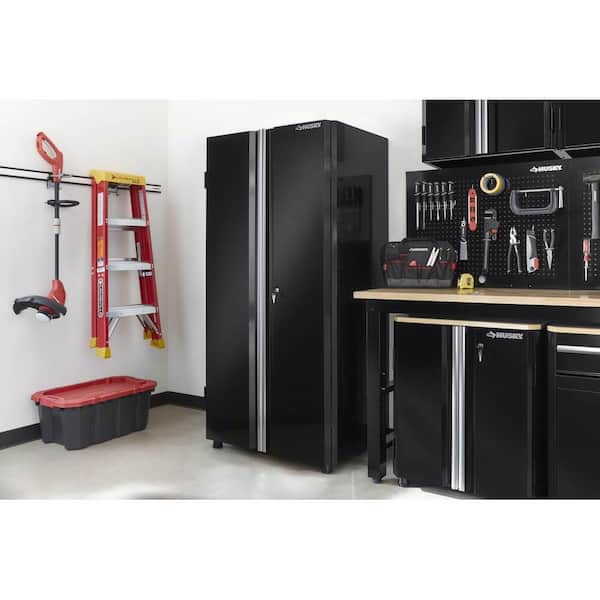
It can be very difficult to live in a garage. A garage isn't a safe place to live in and it can be dangerous. Pests pose a major risk. Garages are a magnet for pests. They are secluded, shady and dark which attracts insects and rodents. You can also access garages. They can also easily get into and out of the building.
Some of these animals may pose a danger to your pets and you. Muskrats, for instance, can be aggressive. They can cause seepage problems. If you are unable to get rid of the muskrats, they can damage your vegetation and spread rabies and other diseases. It is important to keep hazardous chemicals out the garage.
An additional risk is a garage that is not well insulated. When the temperature drops, you may have a problem. This is when you need to keep the floors warm. The best solution is to install garage heating systems. Alternatively, you can create a second floor apartment.
For many reasons, garages are popular choices. Typically, it's because of convenience. Garages are easy to access, making it possible for people to move around the building. This area can also serve as storage.

While garages offer a welcome refuge from the elements it is not without danger. For instance, if you are planning to use the garage as an apartment, you will need a building permit. The conversion can also be complicated due to zoning laws.
There will be restrictions in your community regarding the type of living space that you can create. To convert a garage into living space, contact your local alderman.
Before you make major changes to your house, it is a good idea to talk to your agent. It's important that you keep your taxes up to date and pay the right insurance premiums. Major changes can affect your risk profile and make your house more expensive to insure. A bedroom addition can reduce the house's resale worth.
Although the garage can provide shelter from the elements, it can also be a breeding place for many types of pests. Depending on the area you live in, there could be a wide variety of bugs including spiders and raccoons.
If you do decide to convert your garage into a living space, make sure that your neighborhood is not infested. You should report any problems with your neighbor's garage to the local housing authority. You will find your name on the complaint form.

People have been known as to sleep in their cars while heating their homes with kerosene. However, you should always be careful when using these appliances. Your vehicle could also be at risk for being broken into.
Safety is paramount. Safety is the most important factor to consider if you have children. Keep them away from wires and boxes.
FAQ
How long does it usually take to remodel your bathroom?
Two weeks typically is required to remodel a bathroom. The size of your project will affect the time taken to remodel a bathroom. You can complete smaller jobs like adding a sink or vanity in a few days. Larger projects, such as removing walls and installing tile floors, and plumbing fixtures, can take several days.
As a general rule, you should allow at least three days for each bedroom. This means that if there are four bathrooms, you will need 12 days.
What should my cabinets look like?
It depends on whether you're considering selling your home or renting it out. You will need to take down and refinish your cabinets if you are selling. This gives buyers the illusion of brand-new cabinets and helps them visualize their kitchens after they have moved in.
However, if you want to rent your house, you should leave the cabinets alone. Many tenants complain about cleaning up after their previous tenants, including greasy fingerprints and dirty dishes.
To make the cabinets look better, you can paint them. Use a high-quality primer. Low-quality paints are susceptible to fading over time.
What's the difference between a remodel or a renovation?
A remodel is a major change to a room or part of a room. A renovation is a minor change to a room or a part of a room. A bathroom remodel can be a large project while an addition to a sink faucet can be a small project.
Remodeling entails the replacement of an entire room, or a portion thereof. A renovation involves only changing a portion of a room. A kitchen remodel might include the replacement of countertops, sinks as well as appliances, lighting, and other accessories. However, a kitchen renovation could include changing the color of the wall or installing a light fixture.
What is included in a full kitchen remodel?
A complete kitchen remodel involves more than just replacing a sink and faucet. There are also cabinets, countertops, appliances, lighting fixtures, flooring, plumbing fixtures, and much more.
Full kitchen remodeling allows homeowners to make small changes to their kitchens. This means that no demolition is required, making the project easier for both the homeowner and the contractor.
Renovating a kitchen can involve a range of services including plumbing, heating and cooling, painting, and even drywall installation. Depending on how extensive your kitchen renovation is, you may need multiple contractors.
It is best to work with professionals who have experience in kitchen remodeling. There are often many moving parts in a kitchen remodel, so small problems can cause delays. If you choose a DIY approach, make sure you plan and have a backup plan in place in case things go wrong.
How much would it take to gut a house and how much to build a brand new one?
Gutting a home involves removing everything within a building including walls and floors, ceilings as well as plumbing, electrical wiring, appliances, fixtures, and other fittings. Gutting is done when you want to make some modifications before moving in. Because of the many items involved in gutting a house, it is usually very costly. Depending on your job, the average cost to gut a home can run from $10,000 to $20,000.
Building a home means that a builder constructs a house piece by piece, then adds windows, doors, cabinets and countertops to it. This is done usually after purchasing lots. Building a home usually costs less than gutting and can cost between $15,000 and $30,000.
It all depends on what you plan to do with your space. You'll likely need to spend more money if you want to gut a property. You don't need to take everything apart or redo everything if you are building a home. Instead of waiting for someone else, you can build it how you want.
Are there any savings on a remodel of a bathroom or kitchen.
Remodeling a bathroom and kitchen can be costly. But considering how much money you spend on energy bills each month, it might make more sense to invest in upgrading your home.
A small upgrade could save you thousands of dollars each year. Simple changes such as insulation in ceilings and walls can help reduce cooling and heating costs by up to 30%. Even a minor addition can increase comfort levels and increase the resale value.
The most important thing to keep in mind when planning for renovations is to choose products that are durable and easy to maintain. Material like porcelain tile, stainless-steel appliances, and solid wood flooring are more durable and can be repaired less often than vinyl or laminate countertops.
It is possible to reduce utility costs by replacing older fixtures with more modern models. Low-flow faucets and showerheads can reduce water consumption by as much as 50%. Replacing inefficient lighting with compact fluorescent bulbs can cut electricity consumption by up to 75 percent.
Statistics
- 55%Universal average cost: $38,813Additional home value: $22,475Return on investment: 58%Mid-range average cost: $24,424Additional home value: $14,671Return on investment: (rocketmortgage.com)
- About 33 percent of people report renovating their primary bedroom to increase livability and overall function. (rocketmortgage.com)
- According to a survey of renovations in the top 50 U.S. metro cities by Houzz, people spend $15,000 on average per renovation project. (rocketmortgage.com)
- 57%Low-end average cost: $26,214Additional home value: $18,927Return on investment: (rocketmortgage.com)
- 5%Roof2 – 4%Standard Bedroom1 – 3% (rocketmortgage.com)
External Links
How To
How do you plan your bathroom budget?
A remodeling project's most important aspect is making sure you can afford it. If you can't afford it now, how will you be able to pay later?
Planning and understanding the costs of a bathroom remodel requires meticulous planning. Bathroom remodeling is expensive. Many factors influence its cost.
Labor is the largest expense. The size of the job, as well as whether the contractor is a professional or a DIYer, will impact the labor costs. Because they are more experienced and have greater expertise, professional contractors charge more per hour.
Materials are another significant expense. Prices per square foot can vary depending upon the type of material.
Last but not least, let's not forget about the cost of energy. This includes both electricity and gas bills. Peak demand times are when energy prices tend to increase.
The time taken to complete the project is another factor to consider. Bathroom renovations are usually a time-consuming project that requires patience and patience. Some projects can take weeks, while others can take many months.
In addition to these three major categories, there are smaller items such as paint, wallpaper, flooring, etc., which add to the project's overall cost.
To help you determine the best way to approach your bathroom remodeling project, here are some tips to keep in mind:
-
Determine your Budget - Before you begin any remodeling project, it is important to determine what you can afford. It doesn't matter if you think you can afford it or not. It is important to establish a realistic budget so that you can see where your finances are at all times.
-
Plan ahead - When possible, schedule your bathroom remodel during the off-season. Lower energy usage in winter means you'll save money on heating or cooling. It is possible to schedule your remodel at night, when the majority of people use the bathroom.
-
Take a look at other vendors - Now that you have decided on a budget, it's time to begin looking around for possible vendors. Many different options are available to you, including local businesses, online retailers, and even friends and family members who may be willing to work with you on the project.
-
Choose An Estimator - Once you have identified all your potential vendors, you should contact each individually to get estimates. To get the best pricing possible, you will want to get multiple estimates.
-
Get Multiple Estimates. After you receive your initial estimates, it is important to compare them with each other to determine which vendor has the lowest price. After you have selected the vendor, ask them for a written estimate.
-
Include All Costs in Your Estimate - You need to include all expenses you intend to spend on your project. Specific about any permits, taxes, fees, or other applicable costs in your locality.
-
Don't Neglect Small Details - While planning your bathroom remodel, you should also pay attention to small details. For example, do you need a new toilet? Is there room for a shower curtain rod? These changes can easily increase the total amount spent on the project.
-
Consider Insurance - Depending on the scope of your bathroom remodel, it is important to check with your insurance company to make sure you have adequate coverage. Additional expenses could result if you don’t have adequate coverage.
-
Hire a Professional - Once your bathroom remodel is complete, you should always hire a professional to put in the final fixtures. You might be able do the job yourself but it's much more enjoyable to have someone else do it.